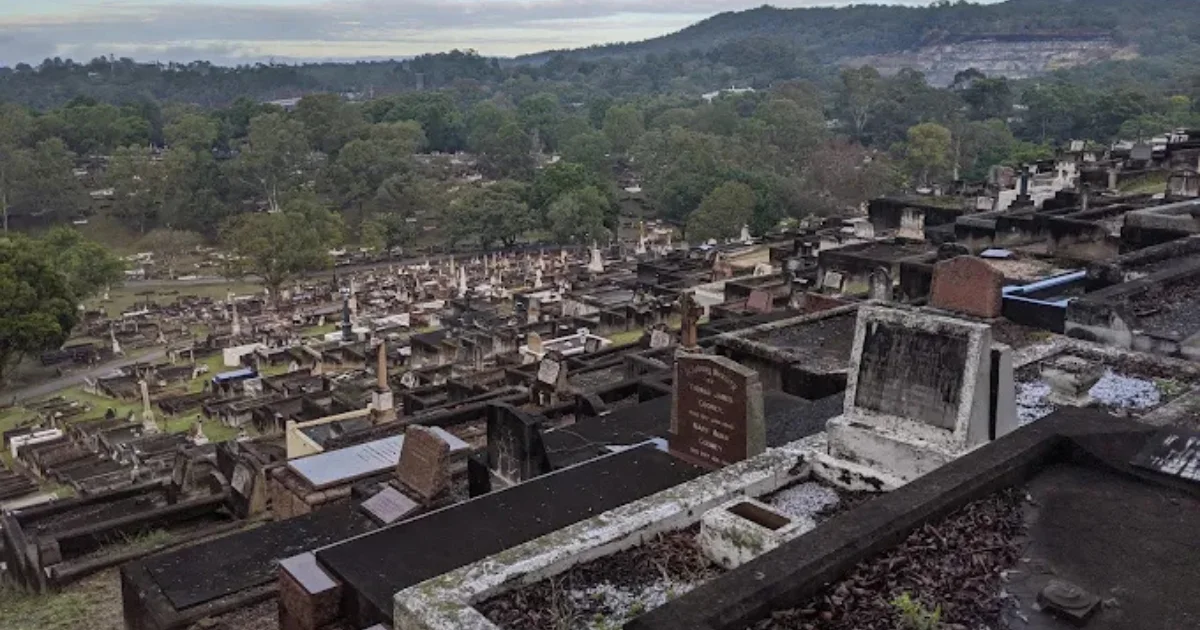Queensland is facing a growing challenge. By 2035, the state could run out of room to bury its dead, with Toowong Cemetery, Brisbane’s largest cemetery, one of the sites in focus. Local authorities across the state are warning that population growth, an ageing population, and rising demand are placing significant pressure on burial space.
Read: Fact and Folklore Blur as Toowong Cemetery Tales Spread Online
New research from the Local Government Association of Queensland (LGAQ) shows many Councils expect their existing cemetery land to reach capacity within the next 10 to 15 years. Unlike most other land uses, cemetery plots are treated as permanent in Queensland. Once used, they are rarely reused, and the scarcity of suitable new land means councils have limited options for expansion.
Alison Smith, CEO of the LGAQ, stated that councils have been studying these statewide challenges and are collectively urging the State to collaborate with them on planning the future of cemeteries across Queensland.
“We need a holistic, strategic and statewide approach to considering and addressing these issues,” Ms Smith said.
Toowong Cemetery, located in Brisbane’s inner west, has long served as the resting place for many families and is recognised as the city’s largest cemetery. In other parts of Queensland, local authorities are already grappling with both space and cost pressures, managing land, securing new sites, and maintaining ageing cemetery infrastructure under financial strain.

The issue is not solely logistical but also cultural. Some religious communities, including Muslim, Jewish, and Eastern Orthodox groups, adhere to burial traditions that limit the wider adoption of cremation, which in turn adds to pressure on land. In other jurisdictions, grave reuse or renewable tenure systems have been introduced. In Queensland, however, perpetual burial rights remain the norm, limiting flexibility in managing space.
Strategies and Suggestions for Sustainable Cemetery Management

Industry experts and councils are advocating for a range of strategies to manage the impending space shortage. One proposed measure is the adoption of renewable tenure for burial plots, where graves are leased for a defined period and may be reused afterwards, a model already in use in parts of Australia and internationally. Such a change could significantly increase the functional life of cemetery land.
Other practical strategies include allowing multiple internments, for example, family members sharing a single plot, and deeper graves to maximise space. These approaches require careful consideration of safety and cultural comfort during burial services.
Cremation is another frequently discussed alternative. While less land intensive, its acceptability varies by community and religious tradition. Advocates are encouraging councils and the state to develop policies that make cremation a culturally sensitive and accessible choice where appropriate.
Local authorities are calling for a statewide strategy that brings together the state, local councils, cemetery operators, and community representatives. The objective is to plan for land supply, invest in infrastructure, respect cultural and religious needs, and ensure the long-term financial viability of cemetery sites.
Read: Toowong Cemetery Holds the Forgotten History of Susan McGowan
For Toowong and other Queensland cemeteries, the conversation is about more than land, it is about how communities honour their past while planning for future generations. With coordinated planning, innovative choices, and community engagement, Queensland may be positioned to balance tradition, memory, and sustainability in its cemeteries.
Published 29-October-2025













